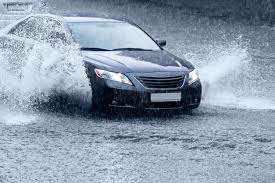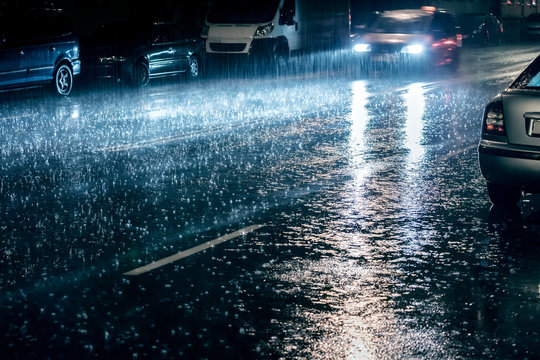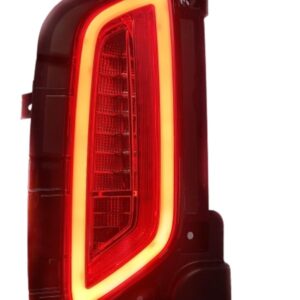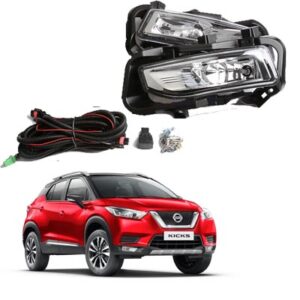Monsoon season comes with lots of challenges for a car owner. On a regular basis the car is required to be serviced. Read below to know how to take care of car in rainy season so that your car’s longevity lasts more.
Visit our page Motovil to remain updated on offers and new launch on car accessories.

1) Fix Any Headlight Cracks Promptly
Good visibility is important during the rainy season. Make sure to inspect your headlights, taillights, fog lamps, and brake lights to check for any damage. Cracks or breakage on the glass of the headlights can let water into the light assemblies, potentially causing electrical issues for you or the fellow commuters. Clean your headlights regularly; an effective method is to use toothpaste to polish the glass, then wipe it off with a clean, damp cloth. Carry a few spare fuses in your toolkit, and make sure all the external wires for fog lights are properly insulated.
2) Regularly Inspect Your Wipers

Sometimes during summer we often neglect windshield wipers because we do not require it more often. Suddenly during the rainy season wipers become essential parts of our cars. So before the monsoon hits, make it a habit to check your wipers. Blades of the wipers that have become hardened or worn out due to summer heat and dust will not clean your windshield effectively, leading to streaks and reduced visibility. Replacing old wipers ensures a clear view during heavy rain. Additionally, keep your windshield washer reservoir full to stay prepared for any downpour.
3) Schedule a Pre-Monsoon Service
Summer can be harsh on your vehicle, so it’s a good idea to have a professional service of your car before the rainy season begins. A thorough check-up will help ensure that your battery, brakes, and other critical systems are in top condition, ready to handle wet conditions and potential waterlogging. This way you can check your car before rainy season.
4) Observe the Traffic Around You

In rainy conditions, it’s helpful to follow the lead of other drivers. If you see a vehicle similar to yours struggling with a particular section of road, it’s wise to avoid it if possible. Plan your trips to avoid peak traffic and be prepared to take alternate routes if necessary.
5) Maintain Your Brakes in Wet Conditions
Brakes can suffer during the rainy season due to water exposure, which can reduce their effectiveness. Ensure your brake fluid is at the correct level and that the handbrake is functioning properly. When driving through waterlogged areas, press the brakes intermittently to help dry out the brake rotors and maintain braking efficiency.
6) Use Charcoal to Combat Odors

Rainy weather can lead to damp and musty odors inside your car. To keep your vehicle smelling fresh, place a few pieces of charcoal in your car. Charcoal is an effective natural deodorizer that absorbs moisture and unpleasant smells.
7) Prevent Corrosion with Anti-Rust Treatments
Moisture from rain can lead to corrosion, especially if your car is older. Protect your vehicle by applying anti-rust spray to the undercarriage and consider a wax coating for the paint to prevent peeling and fading. Additionally, applying anti-corrosion grease to battery terminals can help prevent rust.
8) Check and Maintain Tire Health
Ensure that your tires have adequate tread depth and are properly inflated. Good tread depth is essential for water dispersion and maintaining traction on wet roads. Regularly check tire pressure and adjust as needed to avoid skidding and improve handling.
9) Ensure Windows Are Fully Closed

It’s important to keep your windows completely closed when parking in the rain. Even a small gap can lead to significant water damage inside your car. If you encounter issues with windows that won’t fully close, have them repaired before the rainy season starts. You can use a window visor to solve this.
Important Driving Tips in rainy season
Your car needs extra precaution during the rainy season. Always follow these precautions while driving to ensure your and your loved ones safety.
- Balance between the clutch and the accelerator while driving through patches of water.
- Keep enough distance from the vehicles ahead of you.
- It is always suggested to not drive at high speeds during the rainy season to avoid hydroplaning or aquaplaning. This happens when your tires drive over wet pavement or standing water and lose contact with the road surface, resulting in a loss of traction and an inability to steer the car.
- If you cannot find relatively dry roads to avoid aquaplaning, make sure your car is in first or second gear before entering the water.
- If visibility is almost zero, it is suggested to stop until the downpour ends, or turns to a drizzle.
- Switch on the headlights and tail lights when visibility is poor. This will give you a clear view of the road and make your car visible to others on the road.
By following these tips, you can help ensure that your vehicle remains in good condition and performs reliably throughout the monsoon season. Drive safely and stay prepared!




